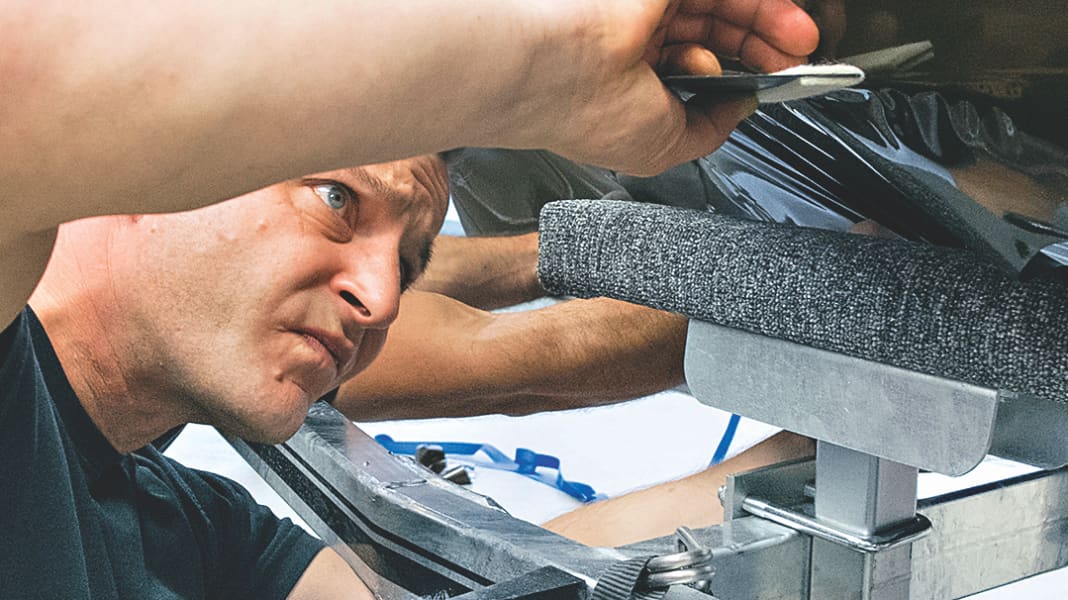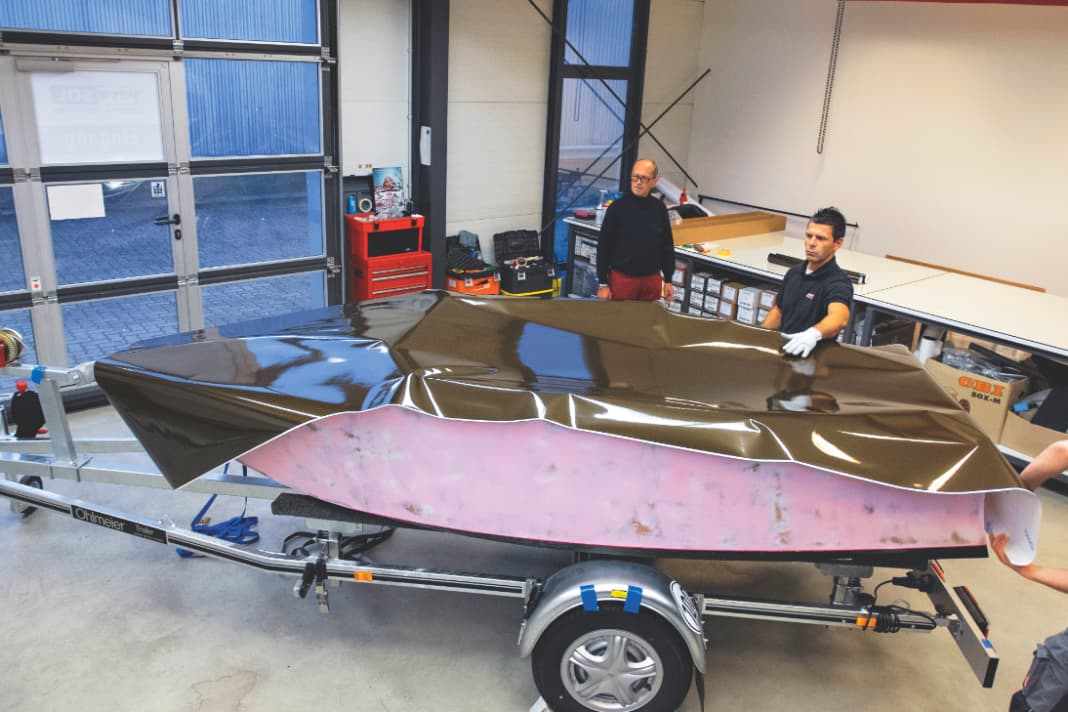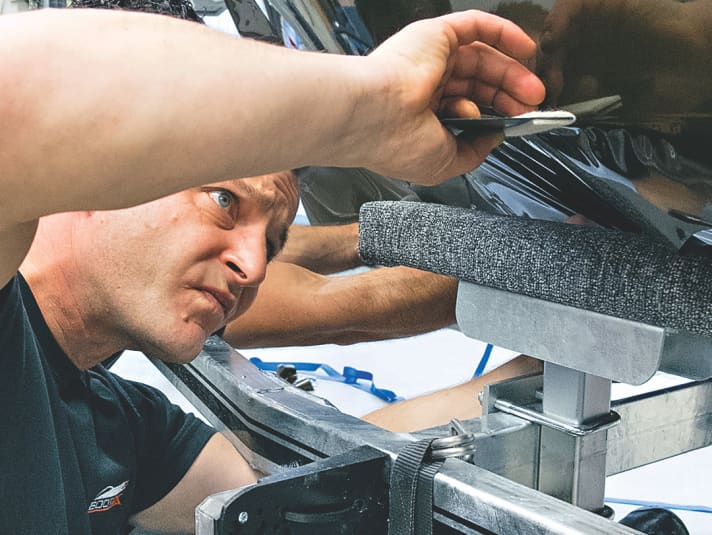







Classic boat paintwork is facing competition. What has been widely used in the car industry for years is now also attracting more and more attention from many boat owners. We are talking about film coatings. This involves covering the hull and/or superstructure with a coloured or printed film and then annealing it at 150 degrees. The result is indistinguishable from a high-gloss paint finish and offers an additional protective layer for the boat in addition to the flawless appearance. In particular, the use of different designs, such as a wood or carbon look, offers unimagined design possibilities.
And if you no longer like the colour, the film can be easily removed again. But let's start at the beginning: For our example film coating, we used a small, open 3.20 metre sports boat and had it coated by the filming professionals at BootOX in Lübeck. Basically, it has to be said that you need to have special knowledge and tools for this work, so foiling on your own is out of the question.
All in all, the film coating of our 3.20 metre boat cost around 1300 euros and was completed in one morning. Although the whole thing is a little more expensive than a conventional paint job, it is completed in a short time and the boat is immediately ready for use again without the need to fit fittings or anything similar.
Further information is available from the Bootox GmbH Grootkoppel 8 b in 23566 Lübeck or on the Internet at
www.bootox.de
